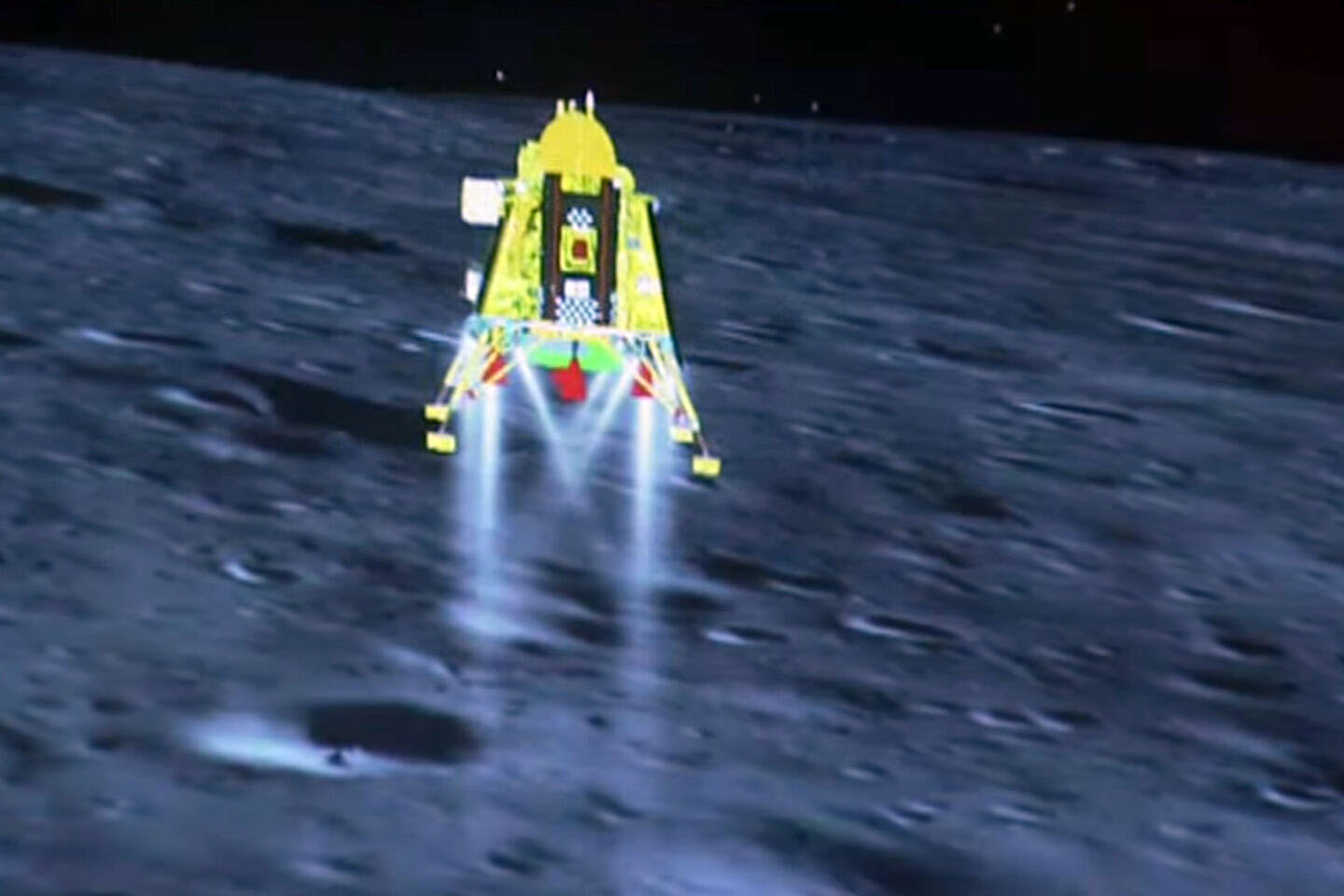Successful Moon Landing: India’s Chandrayaan-3 Mission
The Indian Space Research Organisation (ISRO) has achieved a significant milestone in space exploration by successfully landing its Chandrayaan-3 Lander Module on the surface of the Moon. This mission marks India’s first soft landing on another celestial body, demonstrating new technologies and pushing the boundaries of space exploration.
The Chandrayaan-3 mission was launched from the Satish Dhawan Space Centre in Sriharikota Range (SDSC SHAR) on 14 July 2023. Its primary objective was to achieve a soft landing on the Moon and gather valuable data. After reaching lunar orbit on 5 August, the lander module separated from the propulsion module and began its descent to the surface. Finally, on 23 August, ISRO confirmed that the lander had successfully touched down in the Moon’s southern polar region as planned.
This achievement has not been possible without the support of the European Space Agency (ESA). ESA provided deep space communication support to the Chandrayaan-3 mission, ensuring that operators stay connected with the spacecraft throughout its journey. Communication is important for any space mission as it allows scientists to monitor and receive data from the spacecraft, ensuring its safety and performance. ESA coordinated support from its Kourou station in French Guiana and Goonhilly Earth Station Ltd in the UK, in addition to NASA’s Deep Space Network and ISRO’s own stations.
ESA’s New Norcia Ground Station in Australia played a vital role during the lunar landing. Serving as a backup for ISRO’s ground station, it received crucial telemetry data from the lander, providing information about its health, location, and trajectory. This backup support is common during critical moments of a space mission, such as a landing. Ultimately, this stream of telemetry confirmed the success of the landing.
The support provided by ESA is part of its commitment to assisting international partners in their deep space missions. Many national space agencies operate deep space tracking stations to locate, track, command, and receive data from their spacecraft. However, there are instances where a spacecraft may be outside the field of view of their own antennas or require an additional “pair of eyes” during crucial moments. ESA’s global ‘Estrack’ network of ground stations, coordinated by its ESOC mission operations centre in Darmstadt, Germany, enables partners to track, command, and receive data from spacecraft anywhere in the Solar System.
Looking ahead, the Chandrayaan-3 mission will deploy its rover soon. Over the course of one lunar day (equivalent to 14 days on Earth), the rover will conduct various scientific experiments on the lunar surface. ESA stations will continue to relay telemetry and scientific data gathered by the rover and lander module until the end of the surface operations. For updates on ESA’s support to Chandrayaan-3, follow @esaoperations on Twitter.
The successful landing of Chandrayaan-3 on the Moon discovers new possibilities for India’s space exploration efforts and demonstrates the importance of international collaboration in pushing the boundaries of scientific exploration. It is a testament to the dedication and expertise of ISRO and its partners, including ESA, in their pursuit of knowledge and advancements in space technology. As we continue to explore the mysteries of the universe, missions like Chandrayaan-3 pave the way for future discoveries and inspire generations to reach for the stars.
